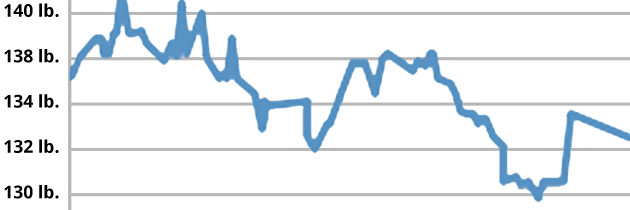Three Things are Required for Fat Loss. Are You Doing All of Them?
In theory, fat loss seems like a pretty simple concept. You go for a run, hit the gym for a 60-minute sesh, or do anything to “feel the burn.”
So why do so many people struggle with fat loss? How is it that some folks can spend all their time at the gym yet never shed the unwanted fat? For fat loss to occur, three things need to happen:
- Fat cells must release fat. This process is lipolysis.
- Fat has to be delivered to the mitochondria via the bloodstream to be burned off. We’ll call this the delivery phase.
- Fat burning has to take place. This is lipid oxidation.
The truth is that most of us are not aware all three steps must occur. While lipolysis is the rate limiting factor (must occur for the other steps to take place) – just because fat gets released does not mean it gets burned. Fat can recirculate and get re-stored.
Lipolysis
Fat release from the cells is the first step required. Exercise is the main precursor for this. If your exercise habits do not match your goals, you could be wasting your valuable time and efforts. Regardless of which type of exercise; jogging, weight lifting or HIIT, each accomplish the first step.
As an aside, yes all three steps happen during your workouts. You shouldn’t care about fat burned during your workout – you care about the fat burned after.
Delivery
Subcutaneous fat is the most difficult fat to remove. For us men, this is our love handles. For most women, it is your hips, butt and thighs. These are our outermost areas of the body which lends them to having the least blood flow. Our visceral fat that is deep in the belly is easy to get rid of because it is next to our blood stream. Fat is easily picked up and taken to get burned off. Since these subcutaneous fat areas are poorly perfused, they are more difficult to achieve fat loss. High intensity, short duration exercise is the best option to create blood flow to these areas.
Lipid Oxidation
It’s difficult to argue which phase is the most important as they are all required, but this is where we want to reap the benefits of our exercise efforts. There are a lot of hormones involved at this phase that dictate whether fat gets burned or circulated and restored. The fat must make it to the mitochondria (think of these as little energy factories) to get burned. Managing insulin is the single most important thing for fat loss.
OK – enough of the science. You just want to know what to do about it. Whether you are training for muscle gain or fat loss, meal timing is important. This is where most people get it wrong.
- If your goal is to increase strength, then protein and carbs before and after your weight training workout are optimal. To make sure you get the most from your workout, you should eat carbohydrates beforehand. Post workout carbohydrates aid in muscle building and recovery.
- If your goal is fat loss, eating immediately before or after your workout can be detrimental to your efforts.
Let’s look at the three steps for fat loss again: release, delivery and burning.
If you do an interval style workout, you’ve achieved release and delivery and you’re primed for burning. If you eat immediately after this workout, fat burning stops. Your body shifts to burning the energy from your post workout meal, not the fat released during your workout. In this case, some fat released in your workout gets circulated and restored.
The same can be said if you ate a large pre-workout meal before your metabolic workout. Your body will be using the pre-workout carbohydrates as fuel thus making it less likely to use stored body fat as fuel for your workout.
So what is the optimal method for fat burning?
I recommend a metabolic-type workout in a fasted state (no pre-workout meal). Your workout should have a high intensity level and should last no longer than 20-30 minutes.
Here comes the most important part of the article: After the workout, keep moving for at least another 30 minutes to continue burning fat released during your workout. This could be walking on a treadmill or a leisure walk outdoors. It is critical you do the low-intensity movement post workout before you eat to ensure maximal fat burning.
To recap: your training and meal timing should reflect your goals.
For muscle building: eat carbs and protein before and after your traditional strength training workout. Don’t overthink timing. Have your meals within four hours of your session. An example would be pre-workout meal at 4pm, gym at 5pm, post-workout meal at 7:30pm (all within four-hour window).
For fat loss: train “fasted” (preferably not have eaten within 4-6 hours pre-workout). Perform a metabolic-type workout (high intensity, short duration). After your workout, get on a stationary bike and read, or take your dog for a walk. Do SOMETHING to keep moving for another 30+ minutes before you eat.
Brian
Brian is a Metabolic Effect-Certified Personal Trainer and hormonal fat loss nutrition consultant. He offers holistic online training packages at his website Fact & Fitness.com. You can also find him on social media at Twitter and Facebook.





